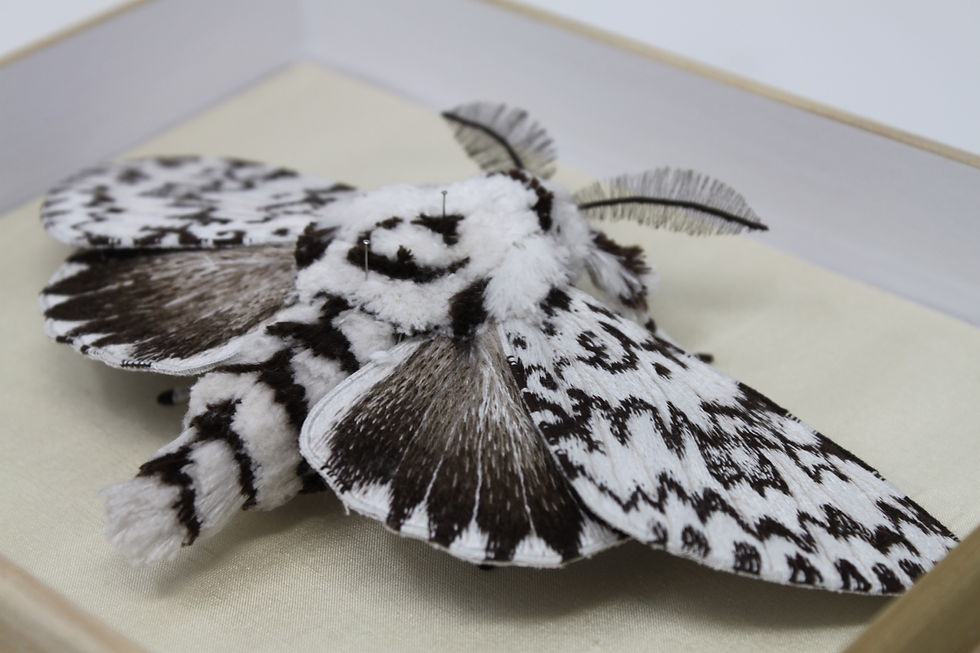The Bee-rometer
- Tzipporah Johnston

- Oct 20, 2022
- 2 min read

In my last post I wrote about my moths being a response to ecological anxiety; I started making my bees for much the same reason.
When I started the Bee-rometer, I was deep in a monotropic attention tunnel, unable to think or talk about anything except bumblebees (apologies to my family who lived through this difficult time). Learning about bees, I also learned about the precarious position of so many native species. Bumblebee habitat – particularly the legume-rich open grassland favoured by rarer species - is under threat. In the last hundred years, we have lost 97% of our flower-rich meadows in the UK. We have also permanently lost two native species, Cullum’s bumblebee and Short-haired bumblebee (the latter was declared extinct in my own lifetime). The Great Yellow and Shrill Carder don’t seem to be far behind. The thought of these beautiful, fascinating little insects disappearing forever seemed unbearable. It’s never just about an individual species though. The decline of bumblebees is part of a wider story of nature depletion and slow ecosystem collapse that we’re all living through (and are scarily indifferent to) right now.

Amidst all this I was looking for a way to explain species loss in a visual way, in a way that might make people care. Bees are so sensitive to changes in the ecosystem, they act as a kind of long-term biodiversity barometer – thus the Bee-rometer was born.
The first barometer “face” represents 1920, when we still had abundant habitat and good species diversity. There are eight native species represented. The second represents 2020, by which point plant diversity has declined significantly; we have already lost two UK bumblebee species and many others are becoming rare. The third face represents 2120 as I imagine it will be if we continue to see the kind of decline in nature that the twentieth century has. The piece aims to be a wake-up call, to highlight what we may lose if we don’t take action now.

It took an extraordinarily long time to finish (though its progress was interrupted by Covid and mask-making), so afterwards I wanted to spend some time on smaller projects. One thing about the bee-rometer was that everyone wanted to be able to hold and touch individual bees – that seemed to be what called to people, more than the overall assemblage. So I started to make small individual bees, that could be held in the palm of the hand. For display, I’ve had to place them under glass, but they are best encountered one-on-one, up close. They always seem to evoke a sense of wonder in people who get to hold them - wonder that I hope can be channelled into protecting the real thing.



Comments